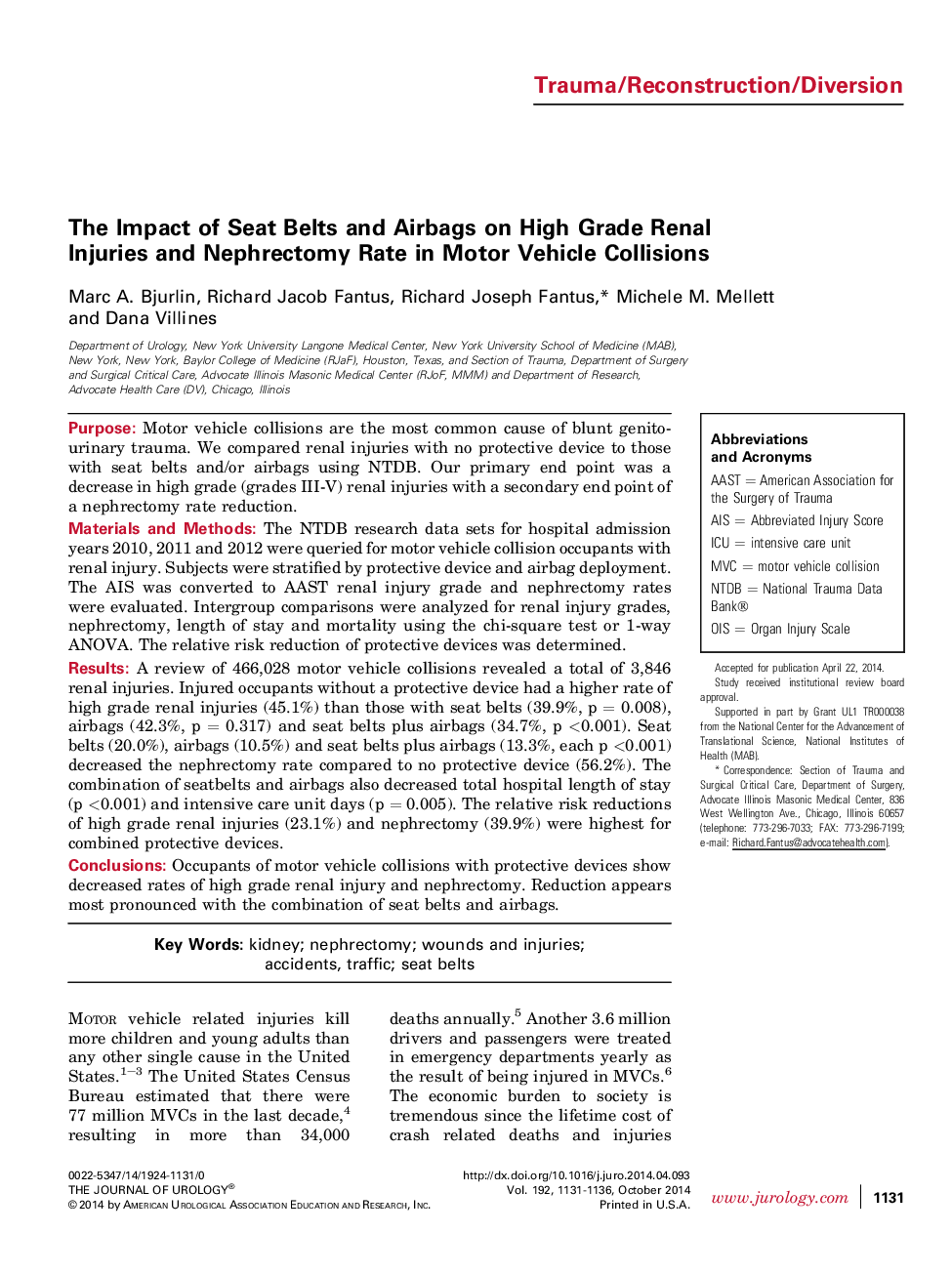| Article ID | Journal | Published Year | Pages | File Type |
|---|---|---|---|---|
| 3860088 | The Journal of Urology | 2014 | 6 Pages |
PurposeMotor vehicle collisions are the most common cause of blunt genitourinary trauma. We compared renal injuries with no protective device to those with seat belts and/or airbags using NTDB. Our primary end point was a decrease in high grade (grades III-V) renal injuries with a secondary end point of a nephrectomy rate reduction.Materials and MethodsThe NTDB research data sets for hospital admission years 2010, 2011 and 2012 were queried for motor vehicle collision occupants with renal injury. Subjects were stratified by protective device and airbag deployment. The AIS was converted to AAST renal injury grade and nephrectomy rates were evaluated. Intergroup comparisons were analyzed for renal injury grades, nephrectomy, length of stay and mortality using the chi-square test or 1-way ANOVA. The relative risk reduction of protective devices was determined.ResultsA review of 466,028 motor vehicle collisions revealed a total of 3,846 renal injuries. Injured occupants without a protective device had a higher rate of high grade renal injuries (45.1%) than those with seat belts (39.9%, p = 0.008), airbags (42.3%, p = 0.317) and seat belts plus airbags (34.7%, p <0.001). Seat belts (20.0%), airbags (10.5%) and seat belts plus airbags (13.3%, each p <0.001) decreased the nephrectomy rate compared to no protective device (56.2%). The combination of seatbelts and airbags also decreased total hospital length of stay (p <0.001) and intensive care unit days (p = 0.005). The relative risk reductions of high grade renal injuries (23.1%) and nephrectomy (39.9%) were highest for combined protective devices.ConclusionsOccupants of motor vehicle collisions with protective devices show decreased rates of high grade renal injury and nephrectomy. Reduction appears most pronounced with the combination of seat belts and airbags.
